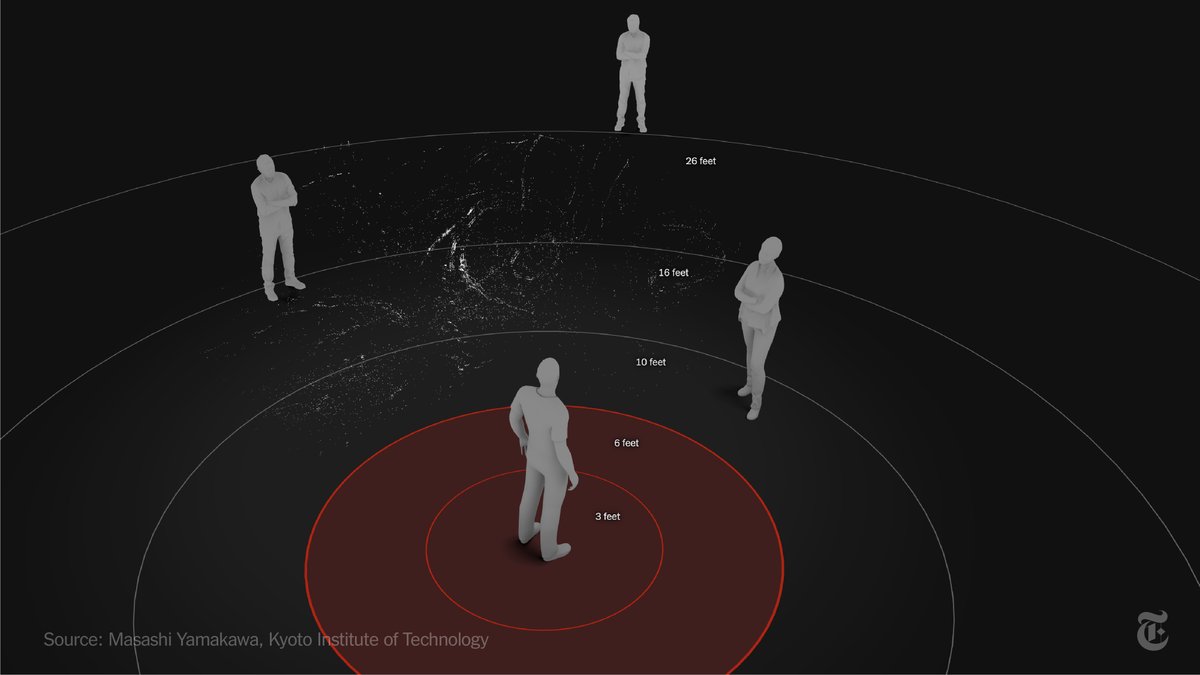The best way to stop the spread of the coronavirus is to stay home. But if you must go out, it& #39;s important to keep your distance — and even staying 6 feet away from others may not be enough. This simulation shows why. https://nyti.ms/34AoC9z ">https://nyti.ms/34AoC9z&q...
Scientists are still working to understand the "trillion-dollar question" of how the coronavirus can spread through the air. The role of aerosols — smaller droplets — is crucial. Here& #39;s what we know now. https://nyti.ms/2xsproA ">https://nyti.ms/2xsproA&q...
This simulation uses research data to show what happens when a person infected with a virus coughs indoors. For a heavy cough, about a quarter-teaspoon of fluid is released, containing respiratory droplets of different sizes. https://nyti.ms/2xj39Wx ">https://nyti.ms/2xj39Wx&q...
The CDC says staying at least 6 feet from others can help avoid coming into contact with the larger droplets and lower the risk of infection.
But the droplets can travel farther, the simulation shows — and smaller ones can stay suspended in the air or travel with air currents.
But the droplets can travel farther, the simulation shows — and smaller ones can stay suspended in the air or travel with air currents.
Researchers at MIT observed particles from a cough traveling as far as 16 feet. Inhaling these particles or touching the surfaces where they land may lead to infection. https://nyti.ms/2xj39Wx ">https://nyti.ms/2xj39Wx&q...
We used augmented reality to show what social distancing guidelines look like in real life: at the grocery store, on a sidewalk, anywhere you might go.
Try it yourself, using the AR feature in our iOS app. https://nyti.ms/2xj39Wx ">https://nyti.ms/2xj39Wx&q...
Try it yourself, using the AR feature in our iOS app. https://nyti.ms/2xj39Wx ">https://nyti.ms/2xj39Wx&q...
See the full simulation to show how far respiratory droplets can spread — and how a mask can help. If you haven’t been keeping your distance to fight the coronavirus, it may persuade you. https://nyti.ms/2xj39Wx ">https://nyti.ms/2xj39Wx&q...

 Read on Twitter
Read on Twitter



